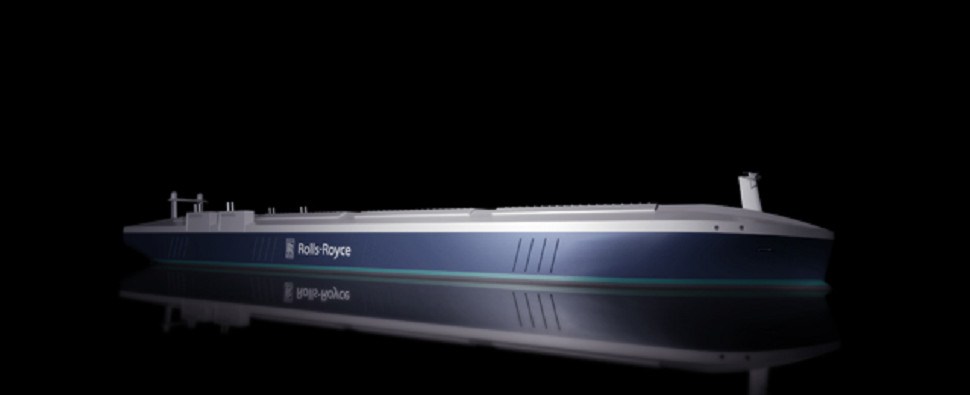
The future is unknown for us, however sometime development trends can be clearly seen. In this case autonomous ships timeline shows development path of autonomous shipping from 1970s till 2018.
Comments regarding autonomous ships timeline at various groups in Linkedin:
Timeline was shared in various Linkedin groups. Bellow are comments attached to Autonomous ships timeline.
On Maritime Executive group:
David Tropp Hag Nice summary. Seems Norway is involved in the majority of the initiatives through the years and today.
Jan J Sundberg Future is always “known” because we create it everyday and in one sense it arrived a long time ago but it is just a bit unequally distributed and therefore hard to see for most! Understanding the S curve & History helps to see many things clearly way ahead and commercialization will come very quickly under the right set of regulatory circumstances. The challenge is still on the building cost side but some countries are way ahead on that compared to other ones. The long term winners will be the ones who have a yard, tech and tools and actually can build fast the whole package and then on top of that take care on the full technical management throughout the whole asset life cycle.
Autonomous solution providers might learn a lot of new interesting about, insurance, risk transfer and liabilities which will be a new beautiful timeline in the future 🤔
KAYODE EGUNLUSI This is very interesting and instructive.
I have been researching on autonomous ships for over a year and this timeline is corroborative.
The efforts of the Norwegian Forum for Autonomous Ship(NFAS), Advanced Waterborne Applications Initiative (AAWA), DIMECC, One Sea Autonomous Maritime Ecosystem, Bureau Veritas-Guidelines for Autonomous Shipping, Safety and Regulations for European Unmanned Maritime Systems (SARUMS), MUNIN, Marine Autonomous Systems Regulatory Working Group (MASRWG)-Industry Code of Practice for MASS, International Network for Autonomous Ships (INAS), are very substantial. The U.S. seems not interested in Autonomous commercial ships, but in the military applications. They have no integrated approach for commercial applications of autonomous ships like Europe.
Hope the IMO Regulatory Scoping Exercise for the use of MASS (Maritime Autonomous Surface Ships) addresses a considerable number of issues involved soon. This will speed up the legal framework.
On Maritme Network group:
John Reynolds FAIM FRINA AFNI Excellent summary in timeline format.
Phil Reynolds Succinct development timeline. Thanks for passing this on.
On Maritime Education and Training – MET Network:
Alexander Spiewok I saw some weeks ago a report in German television that it becomes difficult to find apprentices for the job as car driving instructor because young people with the right competencies are worried that this is a job without future since soon we will have all roads full of automatic cars (will we?).
I’m afraid we may face a similar situation with seafarers – the fashionable talking about autonomous ships coming soon may turn talented youngsters off a seagoing career for no good reason.
Though there may be selected (short distance) trades where autonomous ships may arrive, high initial investment and emergency response costs as well as the real life conditions at sea will in my opinion require seafarers on most vessels for decades to come.
Woinin MNI Not decades, centuries. I these automation fanatics have their way, it would fix that a good part of human active population will sit behind a computer screen, while even much more will do the same to solve all the legal disputes arising from software mistakes. It means that a lot of the energy produced worldwide will be needed to run these computers, as it is already the case for the bitcoin. Then we must hope that some power stations will still have some humans to design, control and maintain them!

Lovely time line. I may have to eat crow, but, so far, everything I see says that it can be done, but I have not yet seen a convincing case that it can be done on a commercial basis (This is not new, it also occurred with nuclear power). It certainly would make sense to extend the timeline further back and to include remote steering, autopilots, ARPA, engine telegraphs, AIS and ACCU/wheelhouse controls together with associated reduced manning levels. Undoubtedly there will be increasing automation and associated reduced manning, but fully autonomous unmanned large commercial vessels may not be feasible. Time will tell, but I’ll bet we will have fully autonomous driving before unmanned large commercial ships. http://www.martinottaway.com/blog/rik-van-hemmen/will-robot-ships-be-trading-2020
1)What happens when an autonomous ship develops a leak and there is no one onboard to make a cement box to plug the leak?
2)Scientific vessel Mayflower 400 had to return to Plymouth in UK because of some mechanical failure.
3)Therefore autonomous ships with very limited crew onboard to take care of emergency situations will be the ideal solution.
4)If man himself is imperfect then, can man made devices be perfect? Automation is a good servant but could prove to be a bad Master.